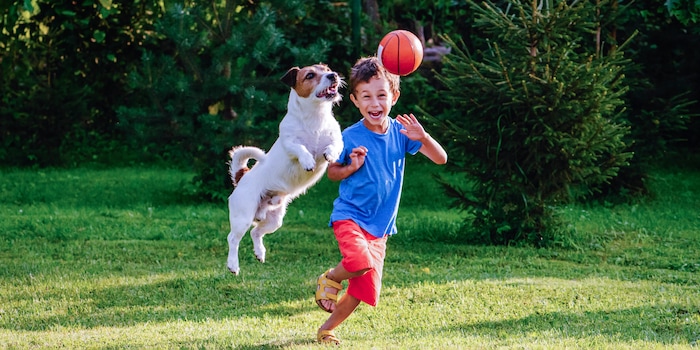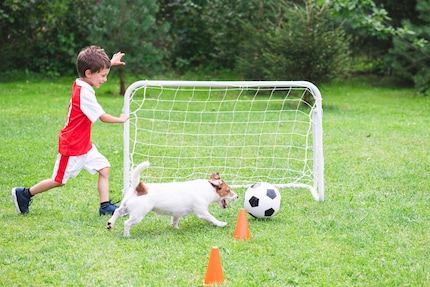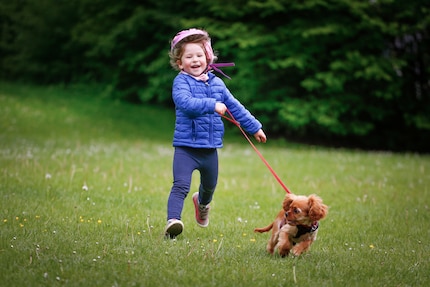
Getting on the dog: How children benefit from their four-legged friend
Children who grow up with a dog are more physically active than children without a dog. This is widely documented and comes as little surprise. What is more surprising, according to a new study, is that the effect is more pronounced in girls than in boys.
Does a child only become more active when they get a dog? Are families more likely to get a dog if they already lead an active lifestyle? Australian researchers have investigated these and other questions. Many studies have already shown that children with dogs are fitter than those without. However, how exactly children's fitness is linked to owning a dog has hardly been analysed to date.
The research team led by Emma Adams from the Telethon Kids Institute has investigated the extent to which the acquisition, ownership and loss of a dog influence a child's physical activity. The researchers analysed data from an existing long-term study on the activity of 600 children aged between two and seven years. Their results have been published in the scientific journal "International Journal of Behavioural Nutrition and Physycal Activity" https://ijbnpa.biomedcentral.com/articles/10.1186/s12966-023-01544-9.

Source: Shutterstock / alexei_tm
Gender differences
Children who had a dog as a pet during the entire study period from 2015 to 2021 were generally more physically active than children without a dog. Girls did an average of eight more physical activities per week, compared to seven for boys
If the children had a dog as a companion during the course of the study, the number of weekly activities increased by seven. An increase in light activity was particularly noticeable in girls, as the researchers report. With a dog, they spent almost an hour more time each day on light physical activity and play than in the period without a dog.
The results were particularly pronounced in girls, with girls who owned a dog increasing their light-intensity activity and play by 52 minutes per day.
Grief makes you immobile
The death of a girl's dog during the study also had serious consequences in terms of physical activity. These subsequently decreased by over an hour per day. Across both genders, the number of physical activities per week decreased by eight for boys and ten for girls.
One possible reason for this is obvious: grief. "Studies have shown that people often try to cope with the loss of a pet by avoiding certain activities," say the researchers. The activities that remind them of their dog are also affected. For example, if regular walks with the family dog are not replaced by other activities after its death, the child may exercise less.

Source: Shutterstock / FotoES
Everything picobello with Bello?
According to the researchers themselves, the study provides the first evidence that getting a dog can lead to an increase in certain types of physical activity. "Overall, our results suggest that getting and owning a dog has a positive effect on children's physical activity," concluded the authors of the study. According to the study, a family dog can also reduce the risk of chronic diseases in children in the long term.
Cover photo: Shutterstock / alexei_tm
I'm a full-blooded dad and husband, part-time nerd and chicken farmer, cat tamer and animal lover. I would like to know everything and yet I know nothing. I know even less, but I learn something new every day. What I am good at is dealing with words, spoken and written. And I get to prove that here.
From the latest iPhone to the return of 80s fashion. The editorial team will help you make sense of it all.
Show all